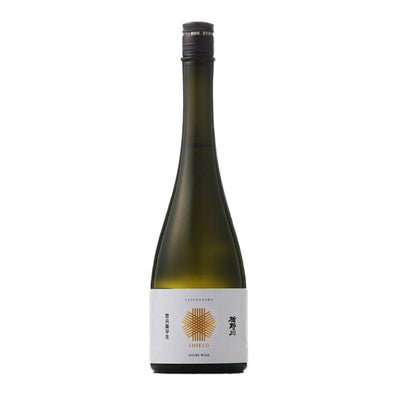The Ingredients of Sake
The Ingredients of Sake
The ingredients of sake can be deceptively simple but in reality, hundreds of years of research and refinement have led to the sake we have today. Sake brewers painstakingly choose specific types of rice, water and koji to create sake to their desired taste.
The combination of these chosen ingredients is what leads to the huge range, depth and character of sake.
Rice:
The rice used for sake making is known as sake rice (sakamai) and is quite different to typical rice cooked for eating. The main characteristics of sake rice that make it suitable for sake making are mainly its chemical composition and size.
The most important part of rice for sake making is its high starch content which is crucial in the fermentation process. The high starch content in rice makes it an ideal source of fermentable sugar. Typically, rice also includes various proteins and fats which is nutritious and adds to its flavour when cooked. However, in terms of sake production these can often become a source of unwanted flavours (bitterness or roughness) which can degrade the overall quality of the sake.
Compared to normal rice, sake rice has a lower concentration of these proteins and fats as well as an advantageous distribution of these molecules. Sake rice has more proteins and fats distributed in the outer layers of each grain and an inner core with higher concentrations of starch. This is advantageous as the polishing of these grains will result in the unwanted outer layers being removed while leaving the inner core of starch intact.
On top of this, sake rice tends to have larger grains compared to normal rice. This greatly benefits sake-making as it is less likely to crack or disintegrate during the polishing process. Being able to polish to a higher degree also improves the refinement of the sake, increasing its purity.
Popular sake rice varieties:
There are now over 100 types of sake rice which are used to produce hundreds of unique sake. Throughout the long history of sake, rice has been bred and selected to improve and refine sake brewing. Here are some of the most well known sake rice varieties:
Yamadanishiki:
Known as the “King of Sake Rice'' , this variety of rice is known for its large grains, high starch content and low protein content. This makes it ideal for making highly quality refined sake with a high amount of polish. Yamadanishiki is well known for its use in high grade and aromatic sakes which are loved by many.
Omachi:
Omachi rice has a long history, being produced for over 100 years without alteration. Sake made with Omachi rice is aromatic and full-bodied but still allows the character of the brewery to shine.
Gohyakumangoku:
Developed in Niigata, this sake rice had the highest production amount for years before it was overtaken by Yamadanishiki. Sake made with Gohykumangoku is characterised by its light and mellow taste.
Miyamanishiki:
A rice which is able to grow in cold climates making it popular in the northern regions of Japan. Sake made with this rice is characterised by its refreshing and sharp taste.
Water:
The finished product of sake generally contains 80% water and 20% rice. This goes to show how important the water used for production is. Not only is water a crucial part of the production process and fermentation, it is also a key player in the final taste of the sake. Hence, sake breweries are very specific about their choice of water.
Brewing water can be categorised based on its mineral content, commonly referred to as soft and hard water. The lower the mineral content the softer the water and vice versa. Japan is known for its extremely soft water however there are still distinctions between relatively soft and hard water used for sake brewing. Hard water tends to produce sake with a robust flavour which also tends to be on the dry side. Soft water on the other hand tends to produce a much more rounded mouth feel with a tendency to be sweeter.
To give an example, Kizakura Shuzou based in Kyoto uses a local water source known as “Fushimizu”. This water has supported sake brewing for decades and is characterised by a soft mouth-feel.
Koji:
The key ingredient in the fermentation of sake is a special type of mould known as koji (scientific name Aspergillus Oryzae). This mould propagates on steamed rice when introduced by the brewer, producing enzymes which break down large starch molecules into smaller sugars. This then allows yeast to convert the shorter sugar molecules into alcohol.
There are multiple strains of koji which are utilised by brewers to create variety in their sake. Picking specific koji can enhance flavour, aromas and acidity. Brewers will make conscious decisions the same way considerations are made for the different types of rice and water.
Koji has a long history in the food culture of Japan and has been utilised for thousands of years in Asia. Koji is responsible for a wide range of fermented food products such as miso, soy sauce, mirin and of course sake. These are all defining elements of Japanese cuisine highlighting the immense value of koji.
















コメントを残す